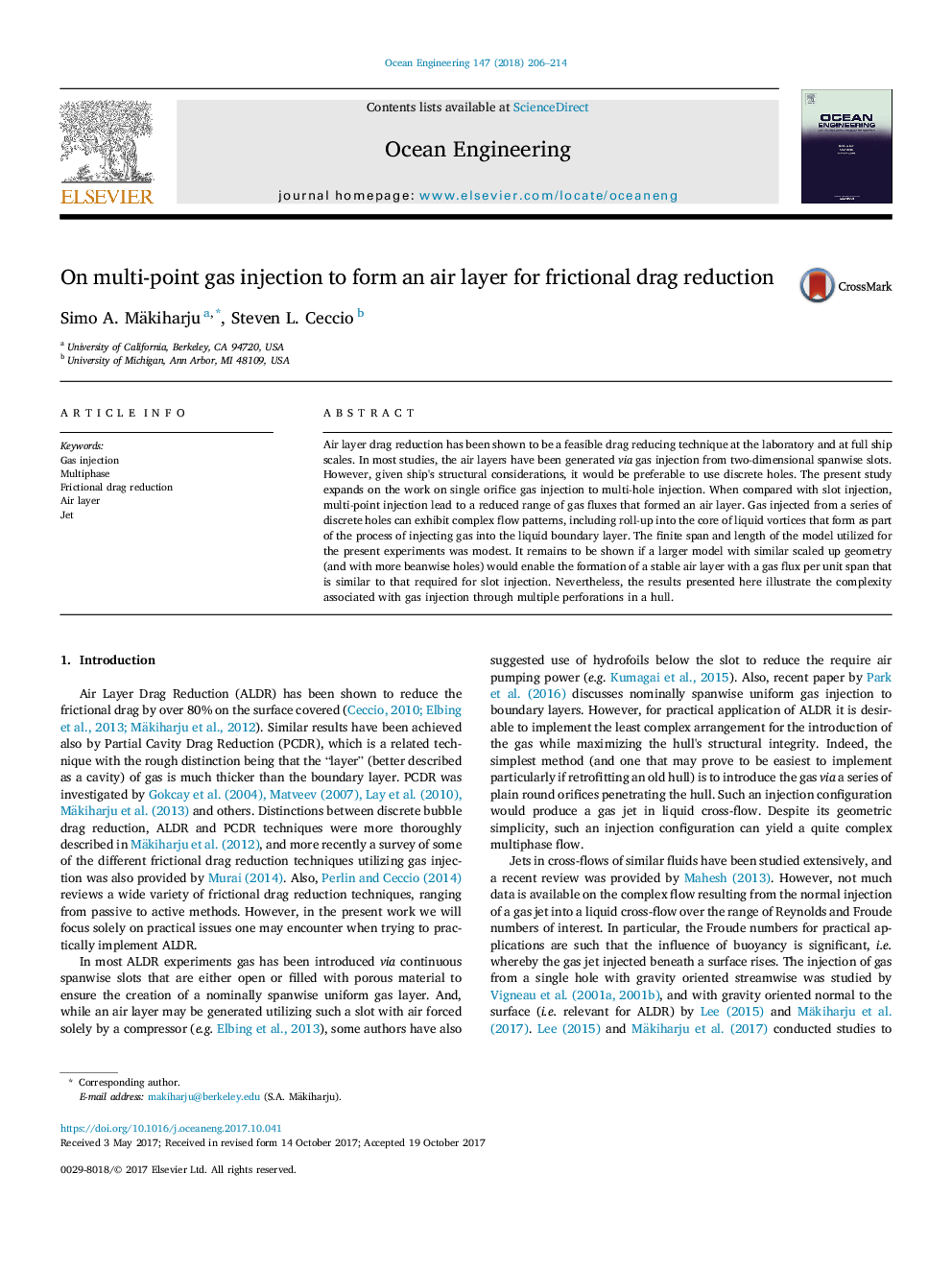| Article ID | Journal | Published Year | Pages | File Type |
|---|---|---|---|---|
| 8063639 | Ocean Engineering | 2018 | 9 Pages |
Abstract
Air layer drag reduction has been shown to be a feasible drag reducing technique at the laboratory and at full ship scales. In most studies, the air layers have been generated via gas injection from two-dimensional spanwise slots. However, given ship's structural considerations, it would be preferable to use discrete holes. The present study expands on the work on single orifice gas injection to multi-hole injection. When compared with slot injection, multi-point injection lead to a reduced range of gas fluxes that formed an air layer. Gas injected from a series of discrete holes can exhibit complex flow patterns, including roll-up into the core of liquid vortices that form as part of the process of injecting gas into the liquid boundary layer. The finite span and length of the model utilized for the present experiments was modest. It remains to be shown if a larger model with similar scaled up geometry (and with more beanwise holes) would enable the formation of a stable air layer with a gas flux per unit span that is similar to that required for slot injection. Nevertheless, the results presented here illustrate the complexity associated with gas injection through multiple perforations in a hull.
Keywords
Related Topics
Physical Sciences and Engineering
Engineering
Ocean Engineering
Authors
Simo A. Mäkiharju, Steven L. Ceccio,
